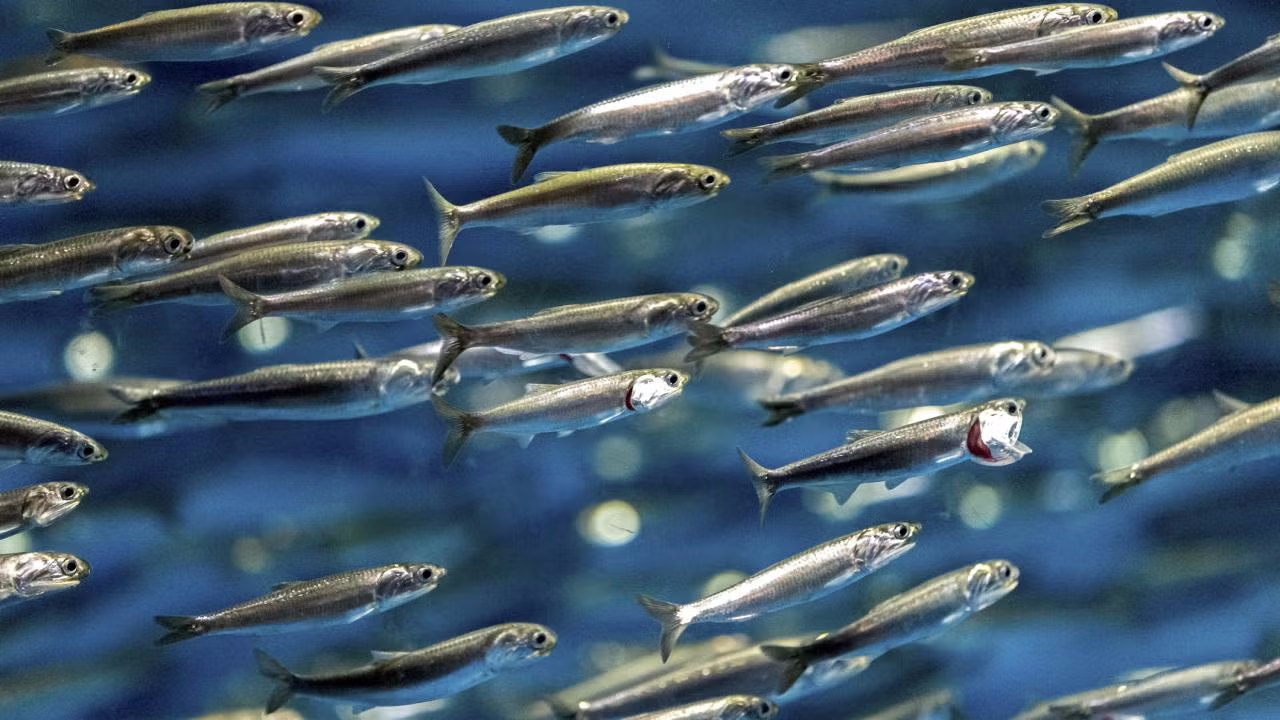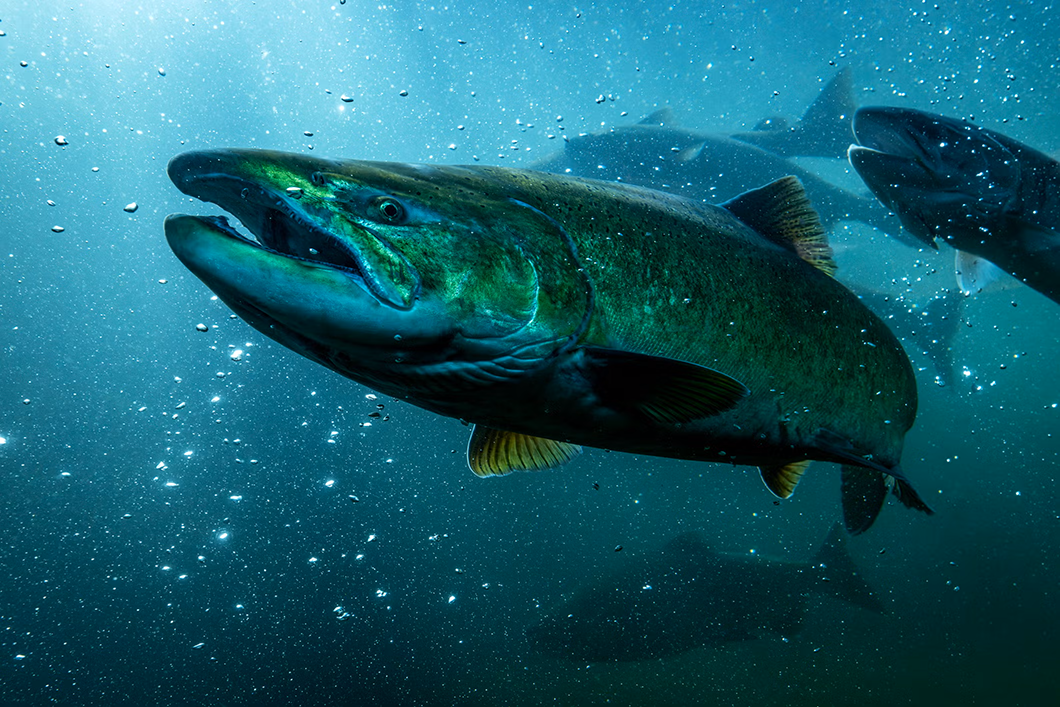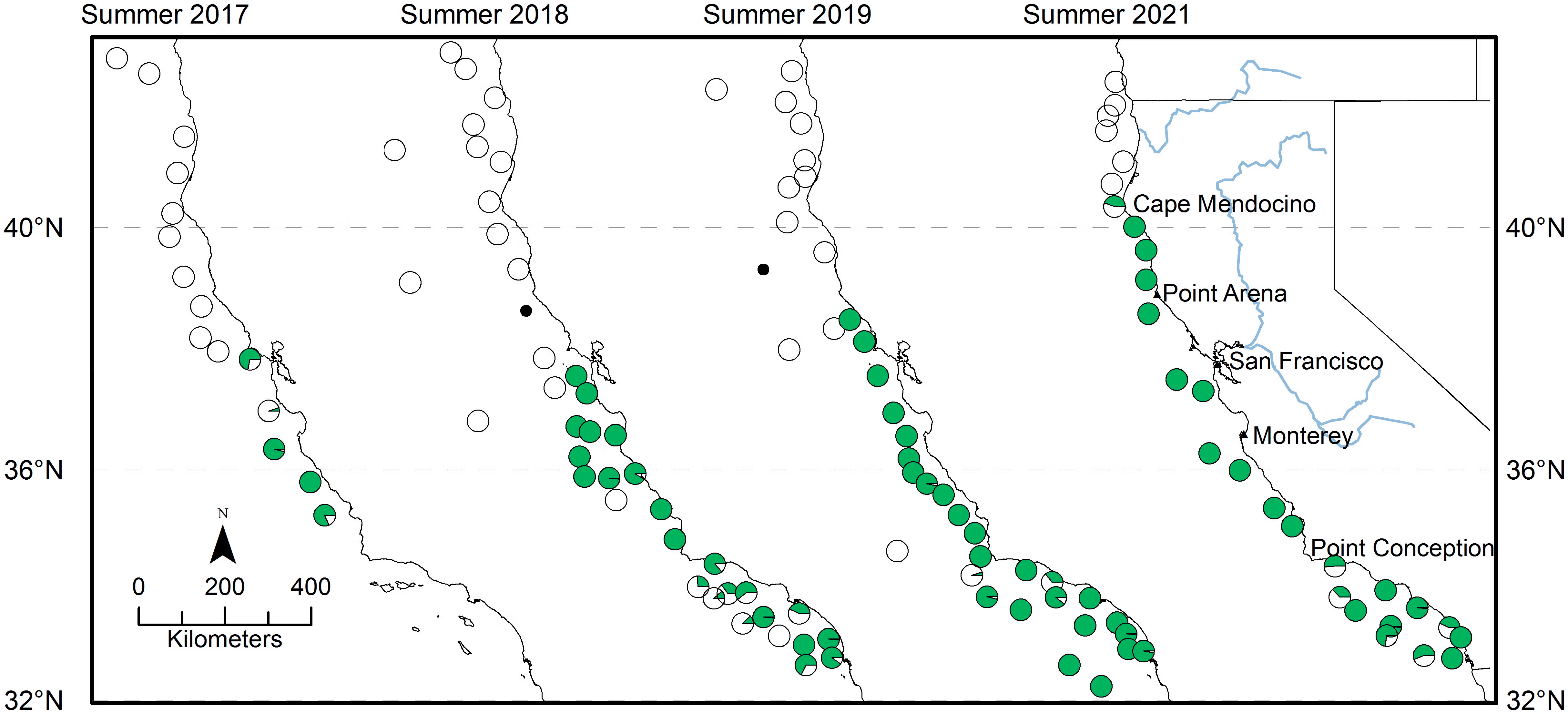
Anchovy Dominated Diets off the West Coast Pose New Dangers for Salmon
Lack of Key Vitamin Turns Fatal For as Many as Half of Salmon Offspring
A vitamin deficiency likely killed as many as half of newly hatched fry of endangered winter-run Chinook salmon in the Sacramento River in 2020 and 2021. These findings were published June 23 in the Proceedings of the National Academy of Sciences.
The deficiency of thiamine, or Vitamin B1, is linked to large-scale shifts in the ocean ecosystem. These shifts changed the prey adult salmon consume before they return to West Coast rivers to spawn, scientists reported. They said the longtime loss of habitat and water has already weakened many California salmon populations. Further declines from thiamine deficiency or other impacts may lead to their extinction.
The deficiency syndrome can also affect salmon runs like the Central Valley’s fall-run that once supported valuable commercial fisheries across California. They have since dwindled to the point that commercial ocean salmon fishing in California has been closed for the last 3 years.
“Salmon in California have endured one blow after another,” said Nathan Mantua, research scientist at NOAA Fisheries’ Southwest Fisheries Science Center. “They have lost habitat, water, and access to higher elevations. Many are maintained in hatcheries. There is really no safety net left. Any new impact could be the final blow, especially if it continues over an extended period.”
The new research reports on the cause, extent, and impact of thiamine deficiency in salmon in California’s Central Valley. It found endangered winter-run Chinook and commercially valuable fall-run Chinook vulnerable. The problem has also been noted in some salmon in the Klamath River in Northern California.
Uncovering the cause
Researchers from NOAA Fisheries and other federal and state agencies and universities, including UC Davis, learned of the problem in 2020. Fish hatchery staff noticed juvenile offspring of returning adult salmon swimming upside down and in odd corkscrew patterns, with many dying. Further studies found that the juveniles were deficient in thiamine, a vitamin essential to their development early in life.
Fish health experts found that injecting adult female salmon with thiamine as they returned to hatcheries helped produce healthy offspring. Eggs at fertilization or just-hatched fry can also be treated in a thiamine bath in hatcheries. However, fisheries managers have no real option to help wild spawning salmon that are not captured weeks before spawning, which is true for most salmon that spawn in rivers.
Scientists unraveling the cause of the thiamine deficiency found earlier reports of the issue in the Great Lakes and Europe, where the diet of the fish had changed. That led them to suspect that the deficiency could be related to adult salmon eating large amounts of anchovy, which had begun to dominate ocean waters off Central California. They heard stories from fishermen who had cut up salmon and found their stomachs full of anchovy.

“This mystery has been especially difficult to solve because the source of the problem is in the ocean, but the effects show up in rivers and hatcheries,” said Rachel Johnson, a research fish biologist at NOAA Fisheries’ Southwest Fisheries Science Center and affiliate of UC Davis Center for Watershed Sciences. “When young salmon started dying in hatcheries, the ocean—and even the nutritional health of adult female salmon—weren’t where we first thought to look.”
Salmon experts from many agencies, universities, and other institutions joined the research, sharing information as they zeroed in on a cause. The 37 coauthors of the new research paper reflect the broad contributions.
"This work represents an important collaborative partnership between universities, as well as state and federal partners to address an emerging stressor for California salmonids," said coauthor Anne Todgham, a professor in the UC Davis Department of Animal Science. "It is a great example of what interdisciplinary science can do in the service of fish conservation and fisheries.”
Marine isotopes in the eggs of salmon returning with thiamine deficiency finally confirmed the connection to anchovies in the ocean, Johnson said.
Anchovy manufacture an enzyme called thiaminase that breaks down thiamine and can, in turn, affect salmon that eat large amounts of the small fish. While anchovy are known for boom and bust population cycles in the ocean, their population off California had begun growing about 2017. It shot up to a near-record high in 2021, the new research reports.
The cause of the ongoing anchovy boom is not clear. Some studies have tied it to changes in the ocean, perhaps related to coastal upwelling of water from the deep ocean that provides nutrients to feed the marine food web. That may favor the growth and reproduction of anchovies, although so much is changing in the ocean that there may be other factors, too.

Anchovies raise risks
“The ongoing anchovy boom is taking place in concert with other changes in the ecosystem such as an increase in the frequency and intensity of harmful algal blooms, and fishing that may have reduced some other species such as Pacific herrings,” said John Field, who leads the Fisheries and Ecosystem Oceanography program at the Southwest Fisheries Science Center.
“These changes may be amplifying the role of anchovies as a vector of various ecosystem maladies, such as thiamine deficiency complex, and domoic acid toxicosis, in the diets of many predators who otherwise might have had a more diverse array of foraging opportunities,” Field said. “While anchovies generally typify the ideal forage fish, they may at times be too much of a good thing.”
While thiamine deficiency has not been widely known as a problem for salmon, it has been detected in some Alaska salmon populations, the new research reports. The scientists suggest that researchers so rarely test for thiamine deficiency, it may be more widespread in salmon populations than had been known.
They noted that the best early warning sign that thiamine deficiency could be a problem for salmon or other species may not be tests of the salmon themselves. Instead, it could be large-scale ecosystem shifts detected through ocean surveys.
“Ocean ecosystem changes involve so many species and factors that they can cause unexpected impacts,” Mantua said. “You need to be ready for surprises as you watch them all play out.”
This article was lightly adapted from a story originally published by NOAA Fisheries at https://www.fisheries.noaa.gov/feature-story/anchovy-dominated-diets-west-coast-pose-new-dangers-salmon.
Media Resources
- Sarah Mesnick, NOAA Fisheries, press office, sarah.mesnick@noaa.gov
- Kat Kerlin, UC Davis News and Media Relations, 530-750-9195, kekerlin@ucdavis.edu
Additional Resources: